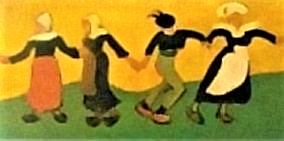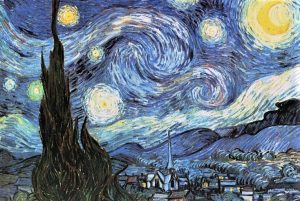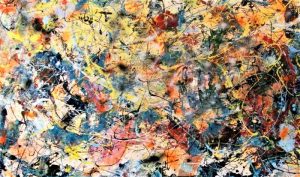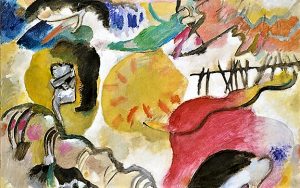Fauvism
Fauvism is considered to be the first movement of the 20th century in modern art that was initially inspired by Vincent van Gogh, Paul Gauguin, Georges Seurat and Paul Cézanne. The artistic movement sought to use intense color as a way of describing light and space, and its members redefined pure color and form as a means of communicating the artist's emotional state. In this regard, Fauvism proved to be an important precursor of Cubism and Expressionism, as well as a touchstone for future modes of abstraction.
What is Fauvism?
Fauvism or fovism, as it is also known, consists of a movement that was developed in France's pictorial field and that stands out, mainly for the excessive use of striking and provocative colors, and for the aggressiveness of its lines.
Mainly, Fauvism gives an important value to individual expression. The artist’s direct experience with his subjects, his emotional response to nature and his intuition were the most important aspects of the technique and for this reason all the elements of the painting were used to achieve this goal.
About Fauvism
Fauvism is a painting technique considered as a trend in the process of arts renovation, which is characterized mainly by color intensification, and by the creation of new dimensions, taking into account different chromatic combinations.
The Fauvists thought that by using colors they could express feelings and it was with this idea that their way of painting was based. They did not want naturalistic representations, on the contrary, they wanted to enhance the value of color itself. It was a rejection of the palette of naturalistic tones that had been used by the impressionists and they were more in favor of violent colors to create a greater expressive emphasis.
Characteristics
Among the main characteristics of Fauvism we can mention the following:
- It has a completely aesthetic and sentimental sense since it is linked to the circumstances of the moment.
- It is attached to the total freedom of nature.
- It is an expressive technique rather than realistic and focuses primarily on capturing the different colors.
- The artist has a strong communion with nature and looks for a way to unite art with life.
- It does not believe in conventions.
- It is considered as an order liberation that rejects other disciplines.
- It has a huge taste for African-black
- It is not a type of art that pursues perfection, so it stands out for its simplicity.
- Mixes the inner world with the real world.
- Uses a range of strong, contrasting colors, highlighting the unreal chromatism, to use colors that in reality do not exist.
- The use of long and spontaneous brush strokes to create depth sensations.
- It had a certain degree of deformation of objects and people, giving them some grotesque expressions.
- They used direct and vigorous brush strokes, with thick touches, without making any kind of mixtures, avoiding shading the colors.
History of Fauvism
Fauvism is one of the 20th century movements in France between 1904 and 1908. It was greatly influenced by the Impressionist movement, with Henri Matisse as its main exhibitor, which was characterized by the use of pure colors to delimit, provide volume, relief and perspectives in the works.
Fauvism actually began in 1901, but was recognized as an artistic trend in 1905, when artists made their first public appearance at the Salon d’Automne in Paris, and in 1906 organized an exhibition at the Salon des Indépendants.
Paint
Fauvistic painters go against impressionist postulates. For them, the main aspect of painting is not light, but color. They do not believe that light makes colors and almost claim that color exists by itself. As for painting, artists do not use mixtures, but use paint as it comes out of the boat, which are pure, flat, alive, striking, and free of pollution. It is important to mention that they do take drawing into account because it helps them define the space of each color.
The colors they use are flat as well as space, so that perspective is lost with color, depth practically doesn’t exist, and they don’t have light bulbs that organize the pictorial surface. The color is in charge of creating the space and it is simple.
Sculpture
Cubism had an important influence within sculpture mainly when we refer to abstract art which was based on geometric figures. Fauvism hardly developed in the area of sculpture because it was based mainly on painting.
Literature
Fauvistic literature was mainly based on finding the effect obtained by means of the unusual collision of unpublished situations that occurred repeatedly, avoiding the technique. It was considered to be a literature full of aesthetics and sentimentality, highly expressive and unrealistic.
Importance
Fauvism was a trend that managed to break with tradition, moving away from reality, showing rebellion, without capturing reality as it is, but rather reflecting the dynamic present in which man lives. It is for this reason that Fauvism is considered to have played a very important role in the development of different plastic languages.
Representatives of Fauvism
The main representatives of Fauvism are as follows:
- Its highest representative is Henri Matisse (1869-1954).
- Paul Cézanne (1839-1906)
- Georges Braque (1882-1963)
- Albert Marquet (1875-1947)
- Andre Derain (1801-1954)
- George Rouault (1871-1958).
- Maurice de Vlaminck.
Works
Among the main and most recognized works of art of Fauvism are the following:
- Luxury, calm and voluptuousness, Henri Matisse
- Dance, Henri Matisse
- Westminster bridge, Andre Derain
- Woman with a hat, Henri Matisse
- Landscape in Chatou, André Derain
- The Seine River in Chatou, Maurice Vlaminck
- La siesta, Henri Manguin
- The Gypsy, Kees van Dongen
- The kitchen, Maurice de Vlaminck
- The bridge of Chatou, Maurice de Vlaminck
- Portrait of Matisse, André Derain
How to cite this article?
Briceño V., Gabriela. (2019). Fauvism. Recovered on 3 January, 2025, de Euston96: https://www.euston96.com/en/fauvism/










